
Whipped egg whites are the essential component of souffles, meringues, pavlova and angel food cakes. Egg whites are pure protein, but when they are whipped, they expand to become foamy and light. It's easier to whip egg whites with an electric beater, but you can also whip them by hand. A few tricks ensure success.
Measuring Egg Whites
Crack and separate two eggs and beat the whites with a whisk just enough to separate them if your recipe calls for a specific measurement of unbeaten egg whites, rather than a specific number of eggs. Measure and repeat as necessary.
Temperature
Set egg whites aside to come to room temperature before whipping them. The protein molecules expand more readily if they are warm.
Equipment
Wash and dry your bowl -- a copper bowl is ideal -- thoroughly before using it to whip egg whites. Fat from even the tiniest drop of egg yolk or oil can bind to the protein in the egg white and prohibit it from forming a skin around air bubbles. Don't use plastic; egg white can get trapped in tiny cracks and scratches in the bowl and inhibit your success.
Whipping
Use a hand-held, rotary egg beater or a wire whisk to whip your egg whites. A rotary beater is a two-handed job, but if you opt for the whisk, tilt your bowl at about a 15-degree angle to allow the egg whites to accumulate in the curve of the bowl. Whip egg whites in a rapid, circular motion, incorporating as much air as possible. Try to whip at about 180 beats per minute. As you whip the eggs, their appearance will become foamier and eventually form peaks. Stop whipping just as a shine begins to develop on the egg whites and they start to form stiffer peaks.
Helpful Additions
Rub the inside of your bowl with a half-lemon to eliminate any unseen specks of oil before adding the egg whites. Some chefs add a pinch of salt or cream of tartar just before the egg whites reach the stiff-peak stage. Alternatively, use a few drops of vinegar or lemon juice to help the whipped eggs retain their fluffed-up form.
Related Articles

How to Cook Eggs Sunny Side Up Without ...

What Causes Cheesecakes to Sink in the ...

Problems With Whipping Egg Whites

The Calories in a Cheese Omelette

Does Adding an Extra Egg to Brownie Mix ...

Do Eggs Make Baked Goods Rise?
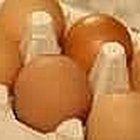
How to Make Your Deviled Eggs Look Great
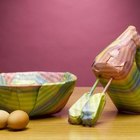
What Happens if You Use Brownie Mix ...

How to Make Homemade Lotion With ...

How to Mix Whipped Cream Cheese & ...

Homemade Coconut Pomade
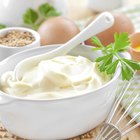
How to Replace Eggs With Mayonnaise

How to Make Frosting Using All-Purpose ...
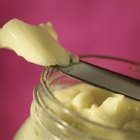
How to Fix Mayo With Broken Emulsion
How to Make Eggs Over Easy
How to Make Homemade Pancakes Without ...

How to Make Peanut Butter Easter Eggs
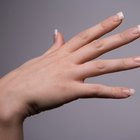
How to Get Natural-Looking Acrylic Nails
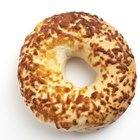
How Many Calories Are in a Cheese Bagel?

How Long Do You Have to Beat Frosting ...
References
Resources
Writer Bio
Aline Lindemann is a health, food and travel writer. She has also worked as a social worker, preschool teacher and art educator. Lindemann holds a Master of Liberal Studies in culture, health and creative nonfiction writing from Arizona State University.
Photo Credits
Jupiterimages/Comstock/Getty Images